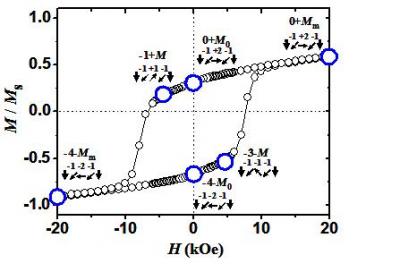A magnetic force microscope (MFM) is capable of measuring the stray field distribution at a magnitude of tens of nanometers near the magnetic film surface, making it an ideal instrument to study the structures of sub-micron scale magnetic grains.
 This image shows the coercivity of FexPt100-x films (x = [10, 85]). (Credit: Copyright Science China Press)
This image shows the coercivity of FexPt100-x films (x = [10, 85]). (Credit: Copyright Science China Press)
A typical MFM cantilever’s current coercivity value is around 0.3 kOe, which can be increased to nearly 10 kOe when a FePt layer is applied. These cantilevers’ stability gets affected by the measured material’s magnetism and high annealing temperature reduces the resolution quality.
To overcome these problems, Southwest University of China researchers have developed an innovative process based on FexPt100-x films. When heated to an annealing temperature of the order of 500°C, a type of soft and hard composite was created in Fe60Pt40 films. The exchange spring’s powerful interference between the soft phase and hard phase produces larger coercivity of the order more than 5 kOe because the film is magnetized through any direction. The magnetic properties of the film are isotropic and the annealing temperature of the process is lower. The stability of cantilevers can be improved when they have been coated with this material. The researchers have reported their findings in a paper titled ‘Structure and magnetic properties of FexPt100-x films’ in Scientia Sinica Phys, Mech & Astron.
By applying this hard-cum-soft composite as a coating material, the MFM resolution can be improved to a value higher than 13 nm. This study has started the coating layer design for the MFM cantilever by selecting an off-stoichiometric composite and a suitable lower annealing temperature to produce the exchange spring. The iron-rich alloy’s ample saturation magnetization fulfills the MFM cantilever’s sensitivity, enabling the production of a superior MFM cantilever.